“Enormous enlargements of an object give it a personality it never had before, and in this way, it can become a vehicle of entirely new lyric and plastic power.” – F. Leger
“It’s a Tourbillon,” Henry Chang told the small crowd at Burning Man gathered around his rolling sculpture art car, Valerian Steel. They were mesmerized by the large shiny round device on top that turned in a bath of pink light, struggling to comprehend how it worked, and what it was.
“What’s a Tourbillon?” the hesitant question was finally asked by a dentist from New York.
“It’s a pocket-watch movement, with a three-axis design that cancels the effect of gravity on a watch. They’re normally less than ¼ inch in diameter, and were invented by French watchmaker Brueget in 1795,” Henry replied.
“Oh,” was the stunned response.
How an ingenious, almost-forgotten pocket-watch movement ended up on top of a masterfully rendered art car in the Nevada desert is emblematic of the work by Burning Man artists and the incredible mind of one in particular, Henry Chang.
“I thought it was elegant and beautifully engineered, so I scaled it up,” says the artist, whose Tourbillon (French for whirlwind) is the largest example of this movement ever made.
Henry now devotes his time to making art that moves — both in the form of kinetic sculptures and three other magnificent art cars. He says Burning Man has had a profound impact on both his professional and personal life.
“I’m positive I would have never gone off on either one of these directions if I hadn’t gone to Burning Man,” he says. “Neither one of these were in my fields of study or strengths, I would have just said no before going to Burning Man. But that’s one of the things that Burning Man teaches you: you don’t have to say no. You don’t have to be an expert to try something.”
To find out more about photos, click on gallery.
One Foot in and One Foot Out
Burning Man could also be defined as the largest group therapy session for artists there ever was. Of all the wonderful experiences there — the unparalleled art, the giddy sharing, comradery by ordeal, and the tsunami of meeting and learning — one experience impacted Henry more than any other: Radical inclusion, one of Burning Man’s guiding Principles, and assiduously observed by that great, cacophonous tribe.
Henry is ethnic Chinese, raised in Laramie, Wyoming, by a professor of engineering and a Chinese mother who taught ballet and jazz dance. His early proclivity in art was soundly ruled out as a success path, so Henry sketched in secret, drawing designs and patterns in a small book.
Subjected to a somewhat benign ostracism growing up, Henry found the inclusion at Burning Man a liberating experience.
“I was never fully included growing up, but never fully excluded either. In Wyoming, I was just an oddity because there weren’t any other Asian people there. For the most part, people were polite, but I had one foot in the culture and one foot out,” Henry recalls
“I don’t get that at Burning Man. At Burning Man, I’m not this person or that person. I’m just a person.”
To find out more about photos, click on gallery.
Banding Together
Henry studied computer science and political science at University of California San Diego and began designing and building homes. He noticed that stainless steel tubes reflected the colors around them and seemed to float in the room. He built tables, chairs and couches with stainless steel tubing that looked native in his minimalist architecture.
Fascinated by technology and trained as a classical and jazz pianist, Henry then designed and built a magnificent stainless-steel tube drum wall, a fabulous laser harp and other instruments for a band called Soul in the Machine (1999-2009).
The laser harp and the band’s music and costumes were much loved and well-remembered at the 2005 Burn, and were honored with invitations to play at Burning Man’s Artumnal Gathering in 2010.
“I remember being impressed with Soul in the Machine’s instruments,” recalls Steven Raspa, Burning Man’s Associate Director of Community Events and an artist in his own right
“The percussion was linked to a lighting board above the band and was a fusion of sound and light instrument. The laser harp was stunning! It was clear to me they were an art band and I just loved they were making their own instruments and wearable art exoskeletons. I’ve always been a sucker for a well-integrated look and concept.”
Henry loved the wildly creative art cars at Burning Man and decided to build one. But what to build? The spectrum of over 600 art cars runs from the mighty Monaco, the largest sailing art car in the world, to the motorized cupcakes and everything in between.
To find out more about photos, click on gallery.
Art Collides with Science
Then the proverbial epiphany. With his engineering haplotype expressing, Henry asked himself: “‘Why metaphor’? Why would an art car merely be a conveyance for art, like a parade float? Why couldn’t the vehicle itself, its frame and chassis and seats and body panels, be the art?”
Whammo. His love for stainless steel tubing, engineering, and innate doer capability hooked up with the missing piece: astrophysics.
Henry was fascinated by astrophysics videos that illustrate the path of our solar system through the galaxy. Seen in trace form, the paths create a supersize helix, which gave Henry an idea. Helixes.
Henry had previously built a pair of free-standing DNA type helixes for Soul in the Machine, and now incorporated this difficult-to-produce form as a motif in his art cars by bending and welding highly polished stainless-steel spirals
What sets Henry Chang’s art cars apart is this dedication to engineering as art. All of the chassis components, except the brakes and powertrain components, are fabricated with this beautifully formed stainless steel tubing that challenges normal fabricating strategies. All these components are lovingly built, hopelessly complex, and created with the precision of aerospace fabrication.
And what might a rolling art form use for power? Nuclear fusion. What else? Exquisitely built stainless-steel vacuum chambers are used to focus laser beams on a point to tease energy out of matter, and Henry managed to buy one online
(He would later meet two scientists at an Albuquerque car show who knew where the chamber had been used and gave Henry its official name, PBFA Z-pinch. This led to a published reference highlighting the peak wattages produced by the chamber, 160 trillion watts. The ultimate amplifier!)
To find out more about photos, click on gallery.
Rolling Monumental Sculptures
Mr. Fusion, Henry’s first art car, was built around this laser induction chamber and miles of beautifully formed and welded stainless-steel tubing to create the frame, chassis, seats and all the details. .
Powered by a small block Chevy V8, Mr. Fusion was a hit and easily pulls off some of the most cherished dynamics and reactions at Burning Man: quirkiness, shock and WTF!? A rolling, shiny monster sculpture with a laser induction chamber will do it every time.
“The nice thing about having a sculpture I can drive is I can experience Burning Man with my sculpture instead of leaving it behind,” Henry says.
Larry Harvey, a Burning Man founder and underrated intellectual, coined the term “Portable Monumentality” to describe the magnificent art installations at Burning Man. Scale mattered to Larry and it matters to Henry Chang too.
“I learned the value of scale at Burning Man, and if I want to make something which will elicit the maximum reaction, then it must have both quality and scale,” Henry says.
Valerian Steel, Henry’s second art car, is like an art supernova. It’s expansive and gushing with lavish arrays of intake horns, exhausts, beautiful flowing three-piece trusses and helix shapes.
Henry has also built three Tourbillons, and he is pursuing public and private art grants to produce a very large example for public places. Perhaps solar powered. Perhaps for a technology capital like San Jose, San Francisco, Berlin, Tokyo, Japan or Shanghai.
Henry’s latest car, the Flux Capacitor, tears a page from the Back to the Future script. Named after the fusion fuel box in the mad scientist’s DeLorean, this art car is epic: 38 feet long, powered by a blown big block V-8 and built with an unheard of eight-wheel parade car layout.
“I wanted to do something epic,” Henry says.
The frame and suspended members are fantastically complicated, and work to provide a super smooth ride on the playa. The scale is overwhelming. Flux towers over everything and looks like it just pulled in from an interstellar run with a load of fusion ore.
This point is emphasized by the front wheels. With four steering wheels independently suspended on seven-foot-long forward-facing swing arms, this is an engineering innovation for the sake of innovation and is beautifully rendered. Watching it operate will warm the hearts of every barnyard hot-rod builder dead, living, or who will ever live.
To find out more about photos, click on gallery.
Breaking Down Silos
Henry’s creations are powerful, sweeping, bold, aesthetically pleasing and above all, a statement of the passion of an unconquerable artist.
“Henry’s mutant vehicles are unexpected, over the top and quite beyond anything we’ve ever seen; they’re familiar, yet alien, and are quite the spectacle to behold,” says Lady Bee, Burning Man’s art curator emeritus.
Steven Raspa says: “Surely there must be a magical world inside Henry Chang’s brain to do what he is doing. I’m certain he ‘sees’ math and principles of the universe as others see the physical world around them. He’s equally adept in the physical arts and has the ability to convert matter and energy into highly accomplished and beautifully proportioned forms.”
Henry also has the ability to convert what matters to him — the artgineering and Radical Inclusion — into something that speaks to others too.
His cars inspire the gearheads, engineers, fabricators, welders and mechanics who may not have previously considered themselves artists or thought about creating art. Seeing methods and materials that they already know in a rolling art work is also highly welcomed.
“One concept which underpins almost everything I do is the attempt to combine art, science and engineering. Many of the forms I design are highly mathematical. Scientists, engineers, fabricators and mechanics are the type of people who gravitate most strongly to my work,” says Henry as he concludes with an important caveat.
“Our culture tends to divide things into silos — if you’re an engineer, you don’t do art, if you’re a mechanic, you don’t do art, if you’re an artist, you don’t do engineering, and so on. This compartmentalization is so unenlightened. One of our greatest Renaissance artists, Leonardo da Vinci, teaches us that it’s all related.
Top photo: Henry wears exoskeleton costume he created for Soul in the Machine. (Photo by Laura Hansen)

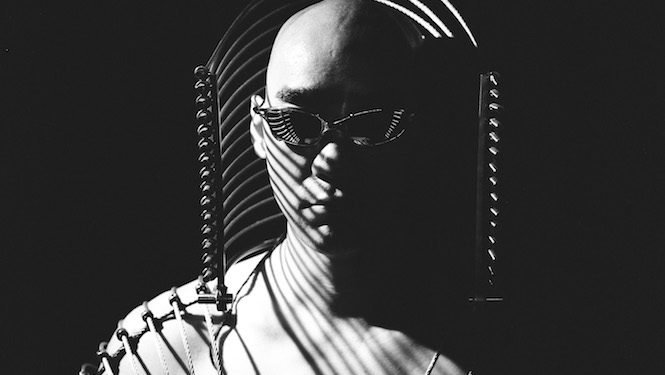
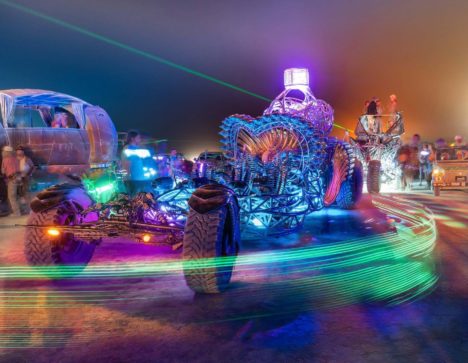
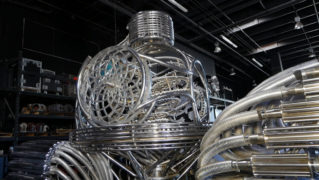
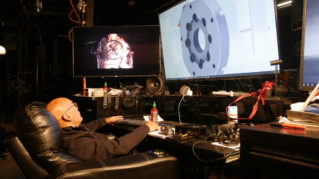
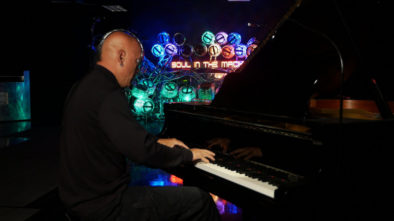
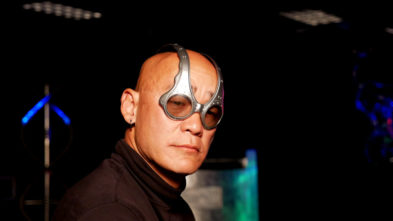
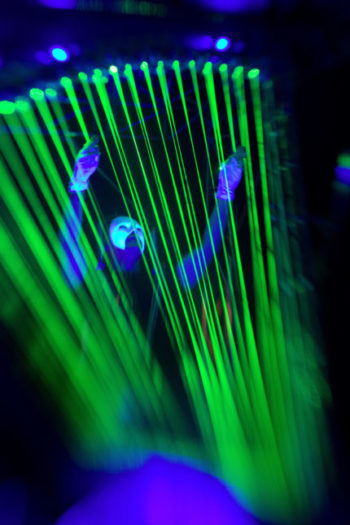
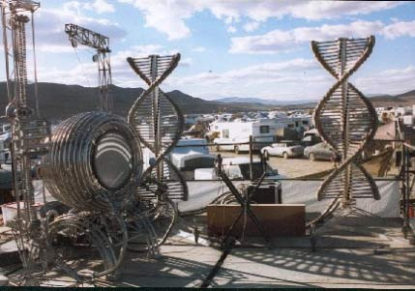
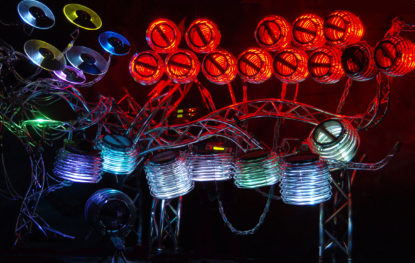
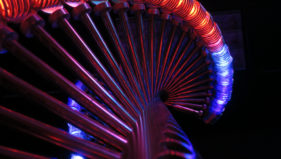
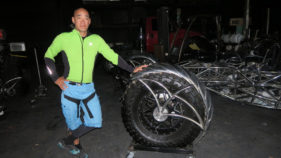
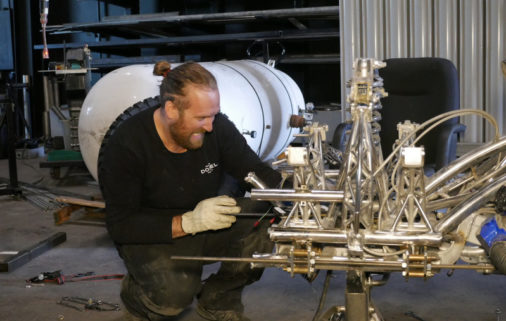
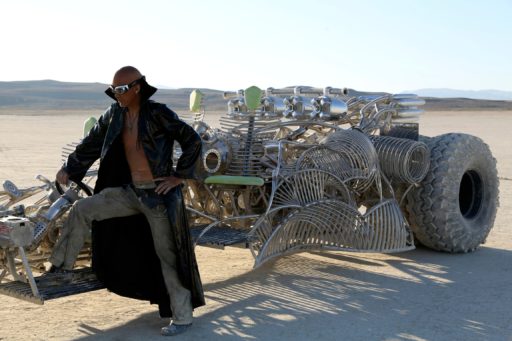
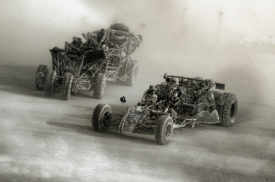
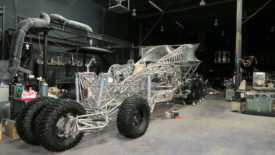

A masterfully written portrait of a modern-day genius! Loved this article! I can’t wait to see what Henry builds next!
To me, this is what Burning Man is all about: inclusion and acceptance leading to inspiration and innovation—and some unbelievable art. I spent a long time last year just marveling at Henry’s vehicles. Wow. Just wow.
Report comment
I would like to acknowledge and commend BMJ editor Jane Lyons who contributed to this article and helped illuminate Henry’s Burning Man journey.
Report comment
Fantastic piece about a fantastic guy!
Report comment
The fantastic Henry Chang! Inspiration for all of us! Thank you Henry.
Report comment
‘Hell, Mr Chang. This the director of Mad Max 5 calling . . . .”
Report comment
Comments are closed.